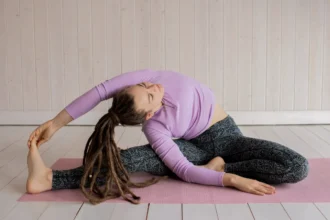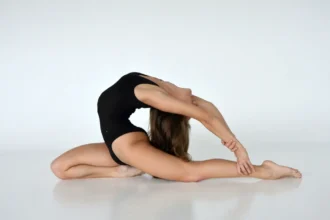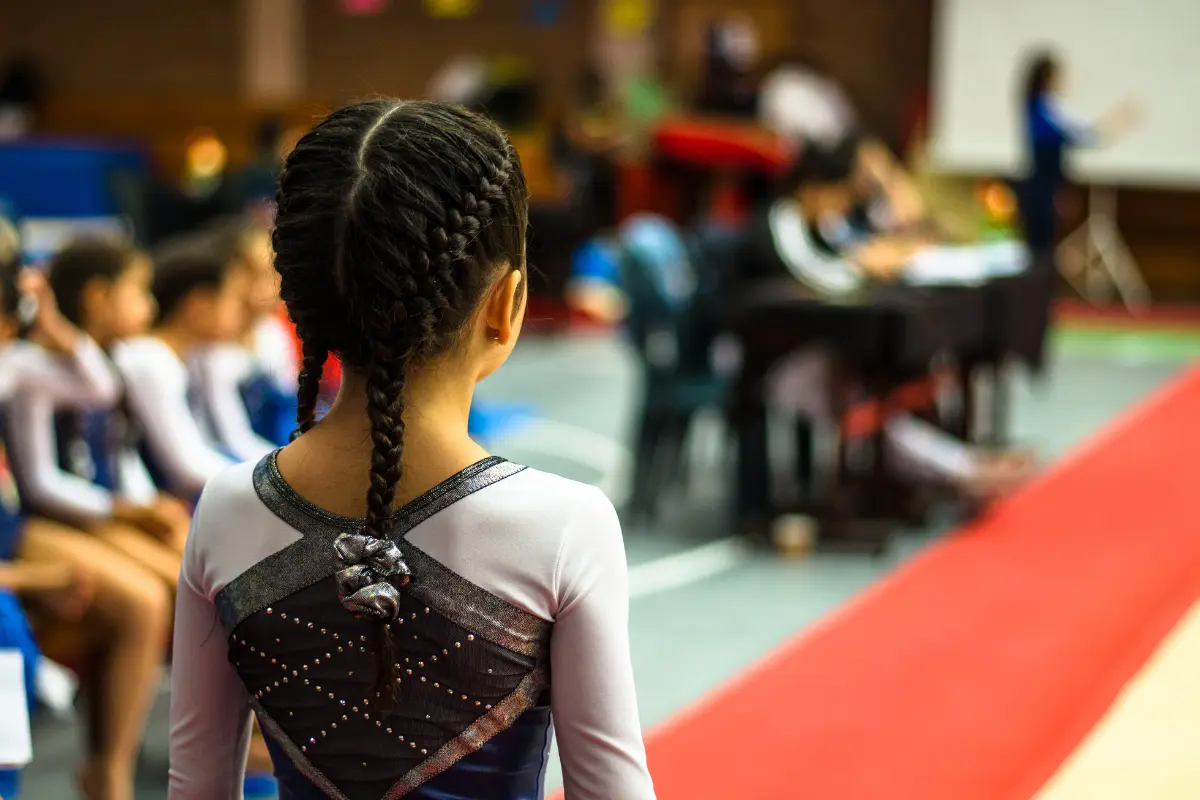For gymnasts, participating in competitions is a big part of the journey, and one of the most significant experiences for any gymnast is attending a gymnastics meet.
What is a Gymnastics Meet?
A gymnastics meet is an event where gymnasts compete against one another on various apparatuses, demonstrating their skills in front of judges, coaches, and an audience. Meets can be organized at different levels, from recreational competitions for beginners to high-level professional events like National Championships and the Olympic Games.
At a typical gymnastics meet, gymnasts compete in events that test their abilities on several apparatuses, such as the vault, uneven bars, balance beam, and floor exercises. Gymnasts usually compete in individual events, but team events, where gymnasts compete as part of a team and contribute scores to a collective team total, are also common.
Types of Gymnastics Meets
There are several types of gymnastics meets, and each serves a different purpose depending on the competition level and age group. The most common types include:
Local Meets
These meets are typically organized at the regional or club level. They are often less formal and may have fewer participants. They are a great starting point for beginner gymnasts, giving them a chance to practice competition conditions in a supportive environment.
State or Regional Meets
These events bring together gymnasts from a specific state or region to compete. Gymnasts typically qualify for these meets through performance in local competitions. The level of competition is higher than at local meets, and the stakes are raised for those trying to qualify for national events.
National Meets
Gymnasts who excel at state or regional competitions can qualify for national-level meets. The U.S. National Championships is one of the most prestigious competitions in American gymnastics, and it’s a significant stepping stone for gymnasts hoping to make the national team or qualify for the Olympic Games.
Invitational Meets
Invitational meets are often organized by specific gymnastics clubs or teams. Gymnasts are typically invited based on previous performances or reputation. These meets are great for gymnasts seeking to face off against top competitors from other clubs or states.
International Meets
For elite gymnasts, international competitions are the highest level. Events like the World Championships and the Olympic Games fall into this category. These meets feature the best gymnasts from around the world, competing for medals and recognition.
How Gymnastics Meets Are Structured
At a gymnastics meet, gymnasts are typically divided into age groups and competition levels, and each gymnast competes in a set of events. Here’s how the process typically works:
1) Warm-up: Before the competition begins, gymnasts have a designated warm-up time to practice on the equipment. This is crucial for familiarizing themselves with the apparatus and calming pre-competition nerves.
2) Rotation: Gymnasts perform routines on each apparatus in a specific order, known as the rotation. Depending on the level of the meet, gymnasts may compete on any combination of the four apparatuses (vault, bars, beam, floor), or they may be specialized in one or two events (e.g., women’s vault and floor, men’s rings and parallel bars).
- Vault: Gymnasts run toward a springboard and perform a jump or dive over a vaulting horse or apparatus.
- Uneven Bars: Female gymnasts perform acrobatic moves and transitions on two parallel bars, while male gymnasts use the high and low bars.
- Balance Beam: Gymnasts perform a routine on a narrow beam, incorporating jumps, turns, and acrobatic elements.
- Floor: Gymnasts perform a choreographed routine to music that includes tumbling, leaps, and balance elements.
3) Scoring: Each gymnast’s performance is judged by a panel of judges who assign scores based on the execution, difficulty, and artistry of their routines. The scores are typically broken down into two parts:
4) Awards Ceremony: After all gymnasts have completed their routines, the results are tallied, and an awards ceremony is held. Gymnasts are often awarded medals or ribbons based on their performance in each event or for their overall score.
How to Qualify for a Gymnastics Meet
The qualification process can vary depending on the type of meet you’re aiming to attend, your age, and your skill level.
1. The Different Levels of Competition
Gymnastics meets are divided into different levels based on skill and age. Each level has its own qualification requirements.
- Recreational Level Competitions: These are for beginner and intermediate gymnasts. There are no qualification scores needed for most of these meets; you just need to be able to perform the required routines.
- Compulsory Levels: These levels (like Levels 1–5) have set routines that gymnasts must follow. You usually don’t need to qualify by score for local meets, but some events may require a minimum score to move to the next level.
- Optional Levels: In optional competitions (Levels 6 and up), gymnasts perform their own routines and usually need to qualify by achieving a certain score in previous competitions.
- Elite Competitions: For events like the U.S. National Championships, gymnasts must achieve specific qualifying scores and rankings.
2. Meet the Age and Experience Requirements
Each meet has age and experience rules to ensure gymnasts are competing at the right level:
- Age Requirements: Some meets may have age restrictions, especially for higher-level competitions. For example, gymnasts may need to be at least 10 years old to enter some national meets.
- Experience Requirements: You may need to have completed certain skill levels or have enough competition experience to participate in higher-level meets.
3. Achieve Qualifying Scores
To qualify for many gymnastics meets, gymnasts must achieve specific scores in previous competitions. Here’s how it works:
- Compulsory Meets: At lower levels (Levels 1–5), there’s usually no qualifying score for local meets, but gymnasts may need to achieve a certain score (e.g., 30 out of 40) to advance to higher levels.
- Optional Meets: Gymnasts at Levels 6 and above need to score a minimum score (e.g., 34.0 or higher) in a previous meet to qualify for the next competition.
- National Meets: To qualify for events like the U.S. National Championships, gymnasts may need to score a specific threshold (e.g., 36.0 or higher) in an official qualifying event.
4. Participate in Qualifying Events
Gymnasts need to compete in certain events to qualify for higher-level meets:
- Regional Meets: These are typically the first step to qualify for state or national meets. Gymnasts perform at regional meets and may advance if they score high enough.
- State or Local Meets: These are smaller competitions where gymnasts can earn scores that help them qualify for bigger events.
- National Qualifiers: Some gymnastics meets are held specifically to determine who can participate in national competitions. These events are important for gymnasts aiming for higher levels.
5. Work with Your Coach
Your coach plays a key role in helping you qualify for meets. They will:
- Create a Training Plan: Coaches help gymnasts improve their skills and prepare for the required routines and scores.
- Track Progress: Your coach will monitor your performance and make sure you’re on track to meet the qualifying criteria for each meet.
- Help with Mock Meets: Some coaches organize practice meets to help gymnasts get used to competition conditions.
7. Register for the Meet
Once you’ve qualified, the next step is to register for the meet. This usually involves filling out forms, paying entry fees, and submitting necessary documents. Be sure to follow the instructions carefully to secure your spot.
How Long Is A Gymnastics Meet?
The length of a gymnastics meet can vary depending on several factors, such as the level of competition, the number of participants, and the structure of the event. However, on average:
Local or Club Competitions:
- Duration: Typically lasts between 2 to 4 hours.
- Factors: These meets often have fewer participants, and the event can move more quickly, especially if gymnasts are competing in one or two events.
State or Regional Competitions:
- Duration: Usually lasts 4 to 6 hours.
- Factors: There are more gymnasts, and each competitor may be performing routines on multiple apparatuses. These meets often have more judges and more strict scheduling.
National or International Competitions:
- Duration: Can last anywhere from 1 day to several days.
- Factors: These events have many participants, and gymnasts compete over multiple rounds or days. For example, qualification rounds, semifinals, and finals may take place on different days. High-level meets like the Olympics or World Championships can span a full week or more.
What to Pack for a Gymnastics Meet
Packing for a gymnastics meet involves making sure you have everything you need for the competition day—from your gear to your snacks. Being organized will help you feel confident and ready to perform. Here’s a simple checklist of what to pack for a gymnastics meet:
1. Competition Gear
- Leotard: Make sure your competition leotard is clean, fits well, and is in good condition.
- Grips (if needed): If you use grips for bars, don’t forget to pack them. Make sure they’re properly fitted and in good shape.
- Warm-Up Suit: A comfortable warm-up outfit to wear while you’re waiting for your turn. This can be a tracksuit or any athletic wear that keeps you warm and ready to move.
- Gymnastics Shoes: If you wear specific shoes for vault or other events, pack them.
- Socks: Make sure you have an extra pair of clean socks, especially if you wear them under your leotard or shoes.
2. Hair and Makeup Supplies
- Hair Ties: Bring plenty of hair ties to secure your hair in a bun or ponytail. You don’t want to run out of them!
- Bobby Pins: Keep a few bobby pins in your bag for any flyaway hairs or adjustments.
- Hair Gel or Hairspray: Use this to keep your hair neat and secure during the meet.
- Makeup (if required): If your gym has makeup guidelines for competitions, bring everything you need: foundation, mascara, eyeliner, etc.
- Brush/Comb: A brush or comb for fixing your hair before your performance.
3. Competition Essentials
- Water Bottle: Stay hydrated throughout the day with your own water bottle.
- Snacks: Pack healthy, easy-to-eat snacks like granola bars, fruit, nuts, or trail mix to keep your energy up.
- Towel: A small towel to wipe off sweat or clean your hands between routines.
- Chalk (if needed): If you use chalk for your routines, pack a small bag of it for bars or beam.
- Band-Aids or Blister Pads: In case of any blisters or small injuries, keep band-aids or blister pads handy.
4. Personal Items
- Cash or ID: Some meets may have entry fees, concessions, or souvenirs to buy, so it’s a good idea to bring a small amount of cash. Also, bring your ID or any meet-specific identification if required.
- Medication: If you take any medication, pack it in a labeled container. This could include inhalers, allergy medications, or anything you might need during the day.
- Hand Sanitizer: Keep your hands clean before and after each routine, especially when handling equipment.
5. Miscellaneous
- Notebook or Journal: Some gymnasts like to take notes on their performance or routines after the meet, so having a notebook might help.
- Earphones or Music Player: If you need to calm your nerves or want to focus before your routine, bring headphones and a playlist.
- Backup Leotard: If you’re worried about wardrobe malfunctions or spills, it’s a good idea to bring a spare leotard.
6. Post-Meet Items
- Comfortable Clothes: After the meet, you might want to change into something more comfortable, so pack a set of casual clothes to change into.
- Flip Flops or Comfortable Shoes: After spending hours in gymnastics shoes, give your feet a break with some comfortable sandals or shoes.
Packing the right items will help you feel organized and focused when you step into the gym for your meet. Double-check your list before you leave home to make sure you have everything you need, from your leotard to your snacks. When you’re prepared, you’ll be able to stay calm and confident throughout the day, leaving you free to perform your best!





